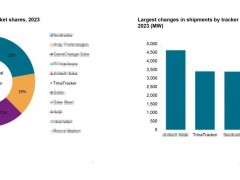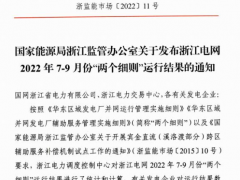
GTM市场调研公司和Bridge to India联合进行了市场调研,在这份名为《印度太阳能市场的战略、玩家与机遇》的报告中,研究者们总结到:在未来的五年内,印度将凭借其在2011年至2016年间超过9GW的预期安装量成为太阳能产业内的一个重要组成部分。
研究者们认为不断发展的国家太阳能任务(NSM)、国家级补贴和全球太阳能企业的现状均为该国太阳能产业发展至吉瓦级别起到了推动作用。这份报告还着重关注了印度市场的动态,并分析了该国太阳能政策的发展路线图、各邦的需求动因以及印度国内的生产与技术地位等。
“印度的太阳能将在未来的十年内出现大幅增长,” Bridge to India的总经理兼此报告的主要作者Tobias Engelmeier博士表示,“这种增长将受到不断上涨的能源需求和化石燃料价格、NSM的野心和各邦所制定的刺激政策,以及包括公共设施及太阳能配额和太阳能成本下降而带来的利润在内的各种可再生能源配额等因素的共同促进。”
在2010年年底时,印度的联网太阳能设备安装量已达到了54MW,但是,该报告也同时指出,NSM所发放的上网电价补贴和古吉拉突邦的太阳能政策也为安装量在2011年年底前增长到365MW并在2012年超过1100MW做出了一定的保障。
尽管印度的太阳能市场具有极大的发展前景及丰富的发展机遇,GTM及Bridge to India却指出,该国确实也面临着许多阻碍发展的挑战。主要的担忧在于专案的银行可贴现性以及银行在印度专案在国家级和各邦级上网电价补贴政策及购电协定的支援下进行首轮融资时所表现出来的意愿不高。
“对于所有在印度进行太阳能开发的企业来说,融资是其首要担心的问题。”GTM市场调研公司太阳能部门经理Shayle Kann表示,“为了缓解这种压力,并最终实现市场潜力,我们预测该国市场将通过战略性合作伙伴和合资企业的形式引入大量竞争手段。印度市场将由全球太阳能现有的开发企业身上得到很多好处,同时,这些区域也将凭借拥有当地合作伙伴关系这一事实来引导该国复杂的能源市场的走向。”
In the new reported conducted by GTM Research and Bridge to India, The India Solar Market: Strategy, Players and Opportunities, researchers have concluded that over the next five years India will become one of the major players in the solar industry with the installation of more than 9GW between 2011 and 2016.
Researchers cited the ever-evolving National Solar Mission (NSM), state-level incentives and global solar companies as helping to spur the country into a gigawatt-scale market. The report focuses on India's market dynamics with analysis of solar policy roadmaps, state- by-state demand drivers and domestic manufacturing and technology positioning.
“Solar in India is set to grow significantly over the next 10 years,” said Dr. Tobias Engelmeier, managing director at Bridge to India and the report's lead author. “This growth will be driven by rising power demand and fossil fuel prices, the ambition of the NSM and various state-level initiatives, as well as by renewable energy quotas, including solar energy quotas for utilities and the subsequent gains in solar cost reduction.”
By the end of 2010, India had installed 54MW of grid-connected solar, but, as the report points out, FIT allocations from NSM and Gujarat's Solar Policy have sparked a promise to grow the installed capacity to nearly 365MW by the end of 2011 and to over 1,100MW by 2012.
While the solar market in India holds the potential for growth and abounding solar opportunities, GTM and Bridge to India noted that the country does face certain challenges that could possibly inhibit the forecasted growth. The main concern lies in project bankability and financing with banks showing reluctance to finance the first wave of Indian project with national- or state-level feed-in tariffs or power purchase agreements.
“Financing is the number one concern for anyone developing solar in India,” said Shayle Kann, managing director of solar at GTM Research. “To ease that pressure and eventually realize the market's potential, we expect to see the competitive landscape evolve dramatically via strategic partnerships and joint ventures; India will benefit from the development expertise of global solar incumbents and these incumbents in turn will benefit from having a local partner to navigate the country's complex energy market.”
 微信客服
微信客服 微信公众号
微信公众号









0 条